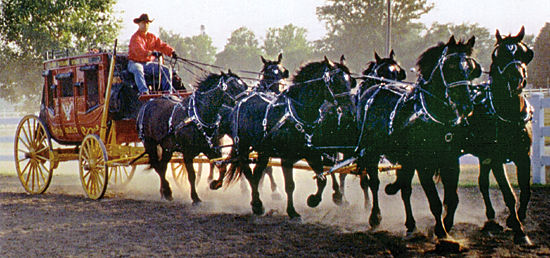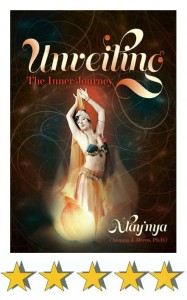The Warrior’s Road to Wisdom: Going from the “Hero’s Quest” to the “Hierophant”
In Star Wars, Luke Skywalker, beholding the devastation that once was his uncle’s farm, has no choice. Not only is there no “going back,” there is nothing left to “go back to.” He seeks out his new teacher, Obi-Wan Kenobi, more out of desperation than desire to go off “adventuring.” Yet, as his training and his travels unfold, he finds himself on a Hero’s Quest; one of the grandest sagas of our time.
Princess Isabelle, in a “The Embryo Goddess and the Morpho,” a short story written by Nicole Cutts, Ph.D. (in Many Paths, Many Feet, edited by Phyllis Wilson), leaves the safety of her Queen Mother’s love and her King Father’s castle, and ventures off to reclaim a portion of her father’s lands and restore the kingdom.
The young Tamino, in Mozart’s The Magic Flute, undergoes the trials of initiation into the priesthood of the Sun God worshippers. In The Karate Kid, young Daniel simply wants to survive the daily humiliations of martial arts-skilled school bullies.
Is there something is common to all these stories, and to many other stories of heroic adventure?
As it turns out, they share a great deal in common – so much so that the great Joseph Campbell identified the underlying story-structure of all of these as the monomyth. As he described it, there is only one great story or grand saga. It has a consistent structure. And it underlies all the great stories of human “becoming.” The monomyth describes the journey of Jason and his Argonauts, as they searched for the Golden Fleece. This monomyth similarly underlies many of our current “grand sagas” – both in myth, movies and books, and in our personal lives.
The reason that certain monomyth retellings achieve huge cultural resonance (Star Wars-like resonance) with us is not just the quality of the movie or the book. Rather, it is that the movie, book, or even someone’s personal history faithfully adheres to the core monomyth storyline.
Monomyths are compelling. They pull us along; they sweep us away. When we go through our own Hero’s Quest or Heroine’s Journey, we undergo a profound personal transformation. We have left the warmth of nurturing love, and the security of a known environment. We even give up our “identity.”
Think of Aragorn, in the Lord of the Rings trilogy. Yes, the monomyth there is being largely carried out by the young hobbits. However, Aragorn as much as the hobbits is on his Hero’s Quest. In classic heroic manner, he travels – not as a prince of the realm, with servants and retinue – but under an assumed name, as the Chieftan of the Rangers of the North. He has relinquished identification with his “true name” and “true heritage” until he has successfully concluded his Heroic Quest; reuniting the kingdoms of Gondor and Arnor.
We have many Heroine’s Quest stories as well; Dorothy in The Wizard of Oz is an early prototype. Sarah in the Labyrinth, and Lyra in The Golden Compass are other young heroines. Each of them steps into their quest to rescue someone whom they know and love. Dorothy wants to rescue her dog Toto, and Sarah seeks to rescue her baby half-brother, Toby. Lyra searches for her friend Roger, and for other children taken by the Gobblers.
Heroic Quests can take on many forms and guises. Consistent to all of them – Hero’s Quests and Heroine’s Quests alike – is the moment when the young Hero/Heroine leaves safety, security, and a well-defined (although limiting) role.
Similarly, we each take on a Heroic Quest – often many times in our lives! When we leave home to go off to college, or join the military, we are beginning a personal Heroic Quest.
When we start a new business, leaving behind the safety, security, well-defined structure, comforting companionship, and certain role of corporate life, we are beginning a new Heroic Quest.
We can undertake Heroic Quests within a corporate structure as well. If we champion a new product or idea; whenever we go into Warrior mode, we are questing.
Questing, although arduous and dangerous, is exciting, More than that, it is self-defining. It is the process by which we individuate; become our own person. We find courage, step out from our parent’s home, or the security of a corporate paycheck, and forge our own pathway. It is through this forging – which may take many years, and require severe and lengthy training (think Luke Skywalker; think Aragorn) – that we become that which we were meant to be. The higher the calling – be it Jedi Knight or Ruler of the united Gondor/Arnor kingdoms – the more difficult, lengthy, and perilous the journey.
Because it is so intense and so self-defining, with such a clear end in sight, we might think that questing leads us to our final goal; that it is the “single defining journey” of our adult lives.
Surpisingly, not so. In fact, even if we undertake successive Heroic Quests, there is still a realm beyond. So suppose that we leave home to go to college, and then get an advanced degree. That’s one Quest. Suppose that we get a corporate job, and spearhead a new initiative within the company. That’s another Quest. Suppose that we then strike out and form our own company; yet another Quest. We can go questing all our lives.
But there really is more. There is indeed a “life beyond the Heroic Journey.” And it is not at all staid and boring! Rather, the journeys of a mature adult, while often more “inner” than “outer,” have just as much challenge as our youthful, self-defining questing – perhaps even more!
A Heroic Quest is obvious. Everyone – including ourselves – knows what we are doing. We are re-uniting the severed kingdoms, getting the “Ring of Power” into Mordor, writing a dissertation, climbing a mountain, or rescuing someone in distress. Our goal and our focus is clear. Further, we shape who we are in the process.
In contrast, the “journeys” that we may undertake as mature adults – something that we may do after we’ve successfully completed a Heroic Quest (or two or three) can be much less overt. Those around us may not even know that we undertaking some sort of “inner journey.” In fact, we ourselves may not even know it – until we come through the other side and say to ourselves, “I really have changed!”
So how do we know the difference? How can we tell if we are on a Heroic Quest, or doing something different? What lies beyond questing? And are there signposts or guides, so that we can know what we’re doing?
That will be the theme of the next blogpost – and perhaps a few more afterwards!
In the meantime, if you have a copy of Robert Moore’s King, Warrior, Magician, Lover – take a look. There’s an error in the basic premise. See if you can discern it. (It will help if you’ve read Chapters 7 and 11 of Unveiling: The Inner Journey.)
More to be revealed in coming posts.
To your health, and the success of your journeys!
Alay’nya
P.S. There’s a clue – and it’s in the title of this post. What’s the role of the Hierophant? How does the Hierophant relate to our Heroic Quest (if at all)? See if you can figure this out before my next posting!



